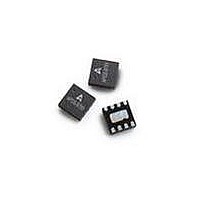APDS-9700-020 Avago Technologies US Inc., APDS-9700-020 Datasheet - Page 11

APDS-9700-020
Manufacturer Part Number
APDS-9700-020
Description
Photodiodes Sigl Conditioning IC f/ Opt Proximity Sen
Manufacturer
Avago Technologies US Inc.
Type
Signal Conditioning IC for Optical Proximity Sensorr
Datasheet
1.APDS-9700-020.pdf
(11 pages)
Specifications of APDS-9700-020
Package / Case
QFN-8
Maximum Operating Temperature
+ 105 C
Mounting Style
SMD/SMT
Product
Ambient Light Sensor
Proximity Sensor Type
Optical
Output Type
Photodiode
Proximity Sensor Sensing Distance
200mm
Proximity Sensor Sensing Distance Range
50 to 300mm
Mounting
Surface Mount
Operating Temp Range
-40C to 105C
Operating Temperature Classification
Industrial
Pin Count
8
Ic Output Type
Analog / Digital
Sensing Distance
200mm
Sensor Case Style
QFN
No. Of Pins
8
Supply Current
500µA
Supply Voltage Range
2.4V To 3.6V
Rohs Compliant
Yes
Lead Free Status / RoHS Status
Lead free / RoHS Compliant
Available stocks
Company
Part Number
Manufacturer
Quantity
Price
Company:
Part Number:
APDS-9700-020
Manufacturer:
AVAGO
Quantity:
250
Company:
Part Number:
APDS-9700-020
Manufacturer:
TI
Quantity:
235
Part Number:
APDS-9700-020
Manufacturer:
AVAGO/安华高
Quantity:
20 000
Recommended Reflow Profile
Figure 15. Recommended Reflow Profile
For product information and a complete list of distributors, please go to our web site:
Avago, Avago Technologies, and the A logo are trademarks of Avago Technologies in the United States and other countries.
Data subject to change. Copyright © 2005-2010 Avago Technologies. All rights reserved.
AV02-0893EN - March 4, 2010
The reflow profile is a straight-line representation of a
nominal temperature profile for a convective reflow sol-
der process. The temperature profile is divided into four
process zones, each with different 'T/'time temperature
change rates or duration. The 'T/'time rates or duration
are detailed in the above table. The temperatures are
measured at the component to printed circuit board con-
nections.
In process zone P1, the PC board and APDS-9700 pins are
heated to a temperature of 150°C to activate the flux in
the solder paste. The temperature ramp up rate, R1, is lim-
ited to 3°C per second to allow for even heating of both
the PC board and APDS-9700 pins.
Process zone P2 should be of sufficient time duration (100
to 180 seconds) to dry the solder paste. The temperature
is raised to a level just below the liquidus point of the sol-
der, usually 200°C (392°F).
Process zone P3 is the solder reflow zone. In zone P3, the
temperature is quickly raised above the liquidus point of
230
217
200
180
150
120
255
80
25
0
R1
HEAT
UP
P1
50
R2
SOLDER PASTE DRY
100
P2
www.avagotech.com
150
solder to 255°C (491°F) for optimum results. The dwell time
above the liquidus point of solder should be between 20
and 40 seconds. It usually takes about 20 seconds to as-
sure proper coalescing of the solder balls into liquid solder
and the formation of good solder connections. Beyond a
dwell time of 40 seconds, the intermetallic growth within
the solder connections becomes excessive, resulting in
the formation of weak and unreliable connections. The
temperature is then rapidly reduced to a point below the
solidus temperature of the solder, usually 200°C (392°F),
to allow the solder within the connections to freeze solid.
Process zone P4 is the cool down after solder freeze. The
cool down rate, R5, from the liquidus point of the solder to
25°C (77°F) should not exceed 6°C per second maximum.
This limitation is necessary to allow the PC board and
APDS-9700 pins to change dimensions evenly, putting
minimal stresses on the APDS-9700.
It is recommended to perform reflow soldering no more
than twice.
R3
60 sec to 90 sec
Above 217 C
MAX 260C
200
REFLOW
SOLDER
P3
R4
COOL DOWN
250
P4
R5
(SECONDS)
t-TIME
300
















